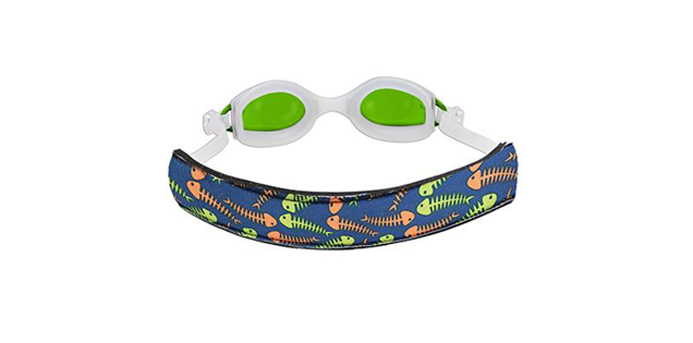 Northfield mom Karen Tobey was sick of swim goggles getting tangled in her kids’ hair.
Northfield mom Karen Tobey was sick of swim goggles getting tangled in her kids’ hair.
Her solution? A mom-inspired, mom-invented product called GoggleMate, which is now available online and in stores.
But where do you start when you get that “Big Idea?”
Here’s what John Calvert, administrator of the Inventors Assistance Program in the U.S. Patent & Trademark Office, has to say about safeguarding your idea and bringing an invention to life:
Conduct research and make a plan
Record your idea and any pre-work in a bound, lined notebook. Do Internet and patent searches on your invention to make sure it’s truly an original idea. Draft a business plan that includes costs, distribution plans, etc. These things will help determine if you should file for a patent or other type of intellectual property protection.
Don’t worry if you don’t have a working prototype
Though you need not actually produce a model of your idea, you do need to describe your invention clearly in “terms that will allow someone having ordinary skill in the same technology to make and use the invention” in order to receive a patent.
Fill out the applications and pay the fees
A provisional patent application is listed at $110. A regular (non-provisional) application costs $165 ($82 if the application is filed electronically—learn more here), plus a search fee of $270 and an examination fee of $110. These fees are for a utility application, which is the most common type of application. A design application has a basic filing fee of $110, a search fee of $50 and an examination fee of $70. On top of that, there are additional fees for issuance of a patent and for maintaining the patent. Click here for descriptions and explanations of fees.
Stay in touch
Applications are examined to see if it meets the legal requirements, and there is usually an exchange of communication between the examiner and the applicant before a decision is made on whether the patent is issued or not.
Lawyer up
A patent attorney is not required, however it’s highly recommended to make sure you are preparing your application and claims accurately. Calvert adds, “Every inventor needs to know when to stop pushing on an invention that does not have potential in the marketplace. Knowing when to say good-bye to your baby is important.”
Tobey highly recommends using a patent attorney to save time and ensure a smooth and accurate process. She agrees with Calvert that conducting thorough research is critical.
“When I was researching new logos and packaging I would take pictures of products, logos and packaging that caught my eye,” Tobey says. “People might look at you funny when you are taking pictures of detergent at Target, but it’s all a part of the process. If you believe in your product or idea, then developing it is actually fun.”

